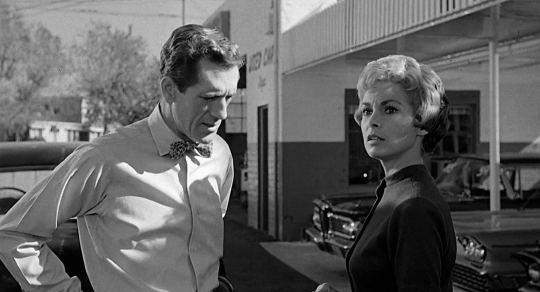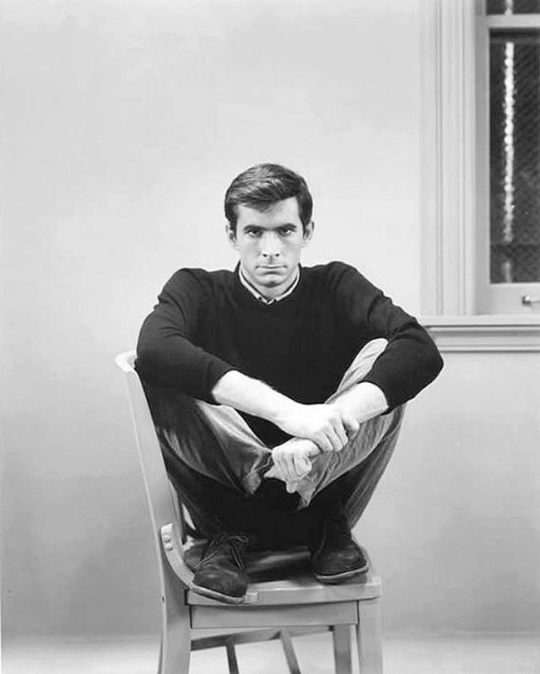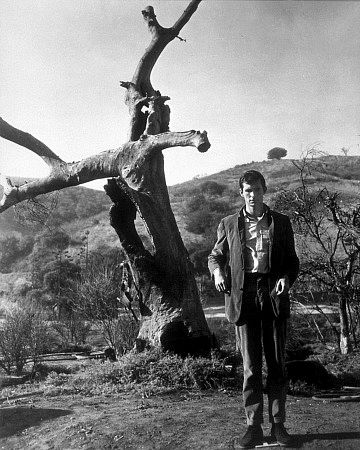1960 was an interesting year.
Bridging the gap of the 1950s to the 1960s, the first year of the new decade was both the last hurrah of the outwardly ‘squeaky clean’ ‘50s, and the beginning of a new decade fraught with change and unrest. The Civil Rights Movement, the Vietnam War, and the continued strain of the Cold War brought with it societal changes as the youth rose up, forming a new culture that further widened the gap between the old and the new.
And as society shifted to a new age, so too did its media.
Every piece of art ever made is a direct result of the culture and the times it was created in, each story the product of beliefs, and values of the era it is in. Whether it supports, criticizes, or simply demonstrates the society it lives in doesn’t necessarily make it good or bad, merely expected. No matter what, every movie ever made has the fingerprints of the culture. Even fantasy and science fiction stories demonstrate the values of the time they were made in.
Like I said, this isn’t a bad thing.

Some things hold up, very well, in fact. Other stories tend to find themselves tarnished by the passing of time.
Today, we’re seeing which category Psycho fits into by answering a simple question:
Is Psycho too dated to be enjoyed by a modern audience?
Depends on what you mean.
In hindsight, it’s kind of obvious that Psycho is fifty years old. (Spoilers below!)
The fashions, cars, and highways are very obviously from the 1960s, (it was much easier to find yourself accidentally off the highway back then) and the old-school style of film assists with that ‘old movie’ feeling. The gothic look of a few scenes almost hearken back to the old Universal monster films, and overall, the movie does show its age with camerawork, although it does all look very good for its age.
But that’s not really the question here.
Like I said, every movie has that cultural fingerprint. We can overlook some editing styles that have gone out of fashion, or some fashions that have gone out of style. Plenty of older films still hold up in a visual way, because we know and understand the limitations of the time. In that sense, every movie is dated, and most of us can accept that.
Harder to accept are the old-fashioned ideas.
It is ideas that make films like Sixteen Candles harder to watch in hindsight, or Grease a struggle to sit through. It’s the ideas, the core themes that a movie is centered around, that really determines whether a movie is dated or not. It is the values of a culture that, looking back, can make modern viewers uncomfortable from a standpoint of progress.
The question is, does Psycho fit into that category?
Honestly…it’s a little bit of both.

There are plenty of elements of Psycho that speak to a different culture. The social stigma surrounding Marion and Sam’s relationship wouldn’t exist today, and the likelihood of Norman’s isolation and abuse would be lessened in a world with more organizations designed to ensure the well-being of children (though not rendered impossible). While the technical advancements like cell-phones and the increase of paperwork may have changed the story in small elements, for the most part, the film still holds up. Marion’s story is not alien or invalidated in a culture with people that still understand the desire to get married and settle down.
There are other elements that give the impression of an older culture. Marion being punished for her morally reprehensible behavior isn’t a trope that has died off, but for the most part, the uncomfortable objectification of female vulnerability has become more scrutinized (rightfully so) in modern culture. Hitchcock’s fascination with his beautiful, fair-haired women (“Blondes make the best victims. They’re like virgin snow that shows up the bloody footprints.”) is well known to those familiar with the film world, and the disturbing trend is continued in Psycho, used in a voyeuristic way in the admittedly brilliantly-shot shower sequence.
So yes, there are some things about Psycho that haven’t aged the best.

However, with that in mind, it’s important to note that a lot of Psycho actually is ahead of the culture.
Sure, Marion Crane is on the receiving end of some weird voyeurism, but that doesn’t change the fact that she, and her sister Lila, are the most interesting characters (besides Norman) in the film. Neither character are the submissive stereotypes more popular in decades past, and neither are ‘put in their place’. Marion almost gets away with her crime, only stopped by her death. She’s got goals, plans, and she’s smart, albeit not a great criminal. In other words, Marion comes across like a real person, and so does Lila. Even though Lila’s not the main character of the film, she too is an interesting, intelligent, competent woman, again, playing the part of detective more successfully than Arbogast, and even Sam.
As a horror film, Psycho isn’t especially sexist, (the ratio of dead people is 1:1 for male/female) and although there is a lack of ethnic diversity (as was unfortunately common for the time), there is another point that Psycho shows with remarkable sensitivity: that of mental illnesses.
As I’ve said before, Norman Bates suffers from Dissociative Personality Disorder. That, on top of an abusive childhood, drives him to fits where his personality is taken over by his ‘alter ego’, Mother, who kills people. Despite the name, there is no real ‘psycho’ in the story, (except perhaps the Mother personality) as Norman does feel empathy, and is a sympathetic character.

Psycho was the first real example of a character being shown as having a real mental illness, and having it be explained, rather than the simple explanation of: “he’s just crazy”. While our understanding of mental illnesses has grown since 1960, this film was one of the first to bring these ideas to the public eye.
In short?
Psycho has its flaws, sure, but it could just as easily been made today.
As the (awful) reboot would demonstrate later, Psycho as a film is not outdated in terms of ideas or core concepts and themes.
Psycho is as scary, and as interesting, as it was when it was first released in 1960. It’s twists, turns, and legitimately unsettling atmosphere make it a horror classic, as well as a mystery/thriller for the ages. It’s still considered a classic for a reason. No matter how much time passes, the horror of the idea that any person, no matter how nice, could be concealing a killer is just as potent as it was in 1960. Its characters and story are just as clear and relatable now as they were then, and as much as they will continue to be.

Yes, Psycho is a product of its times, but that makes it no less enjoyable. It was influenced by its culture just as much as it would go on to influence. That in and of itself doesn’t necessarily make it a good or bad movie, but it does show us that filmmaking, as a part of society, is always changing.
In 1960, Psycho was a creepy story that subverted expectations in the best way, and just because we’ve seen stories like it since doesn’t take away any of its punch.
Thanks so much for reading! Don’t forget to use that ask box if you have your own ideas or thoughts that you’d like to share. I hope to see you in the next article.
One thought on “Psycho: A Product of the Times”